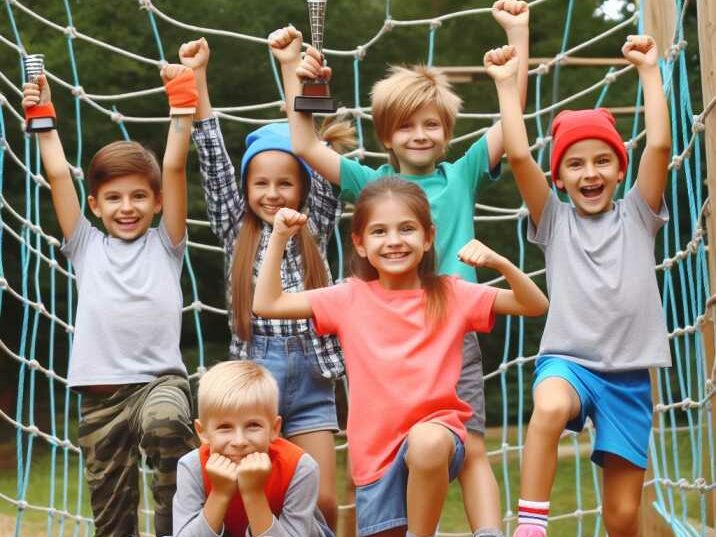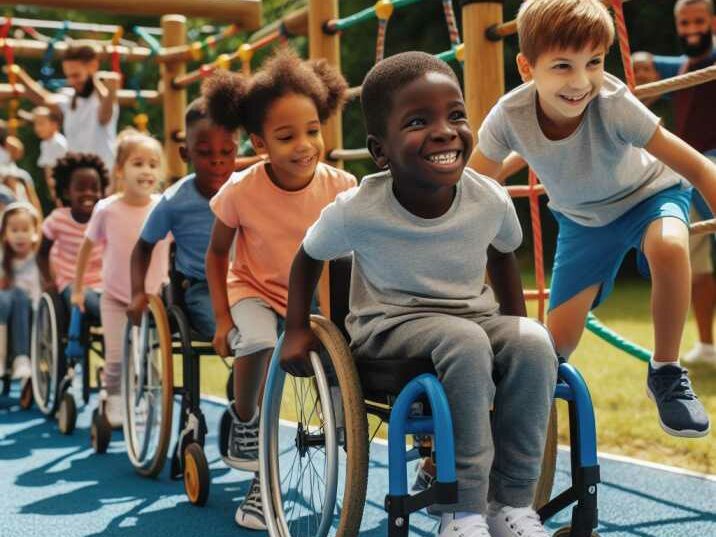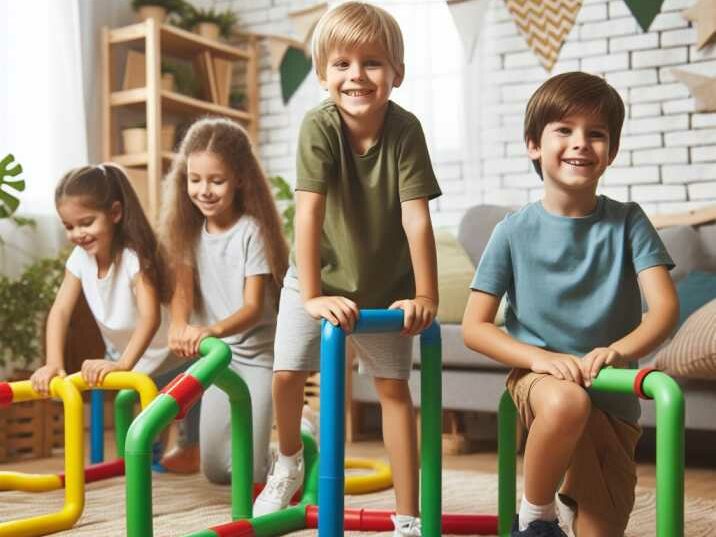Introduction:
Table of Contents
Obstacle courses have become increasingly popular as a fun and engaging way for children to develop crucial skills. In this article, we will delve into the fascinating world of obstacle courses and explore how they play a pivotal role in enhancing balance and coordination in children. As parents and educators, understanding the profound impact of these activities on a child’s development is key to fostering a healthy and active lifestyle.

The Fundamentals of Balance and Coordination:
Before we explore the benefits of obstacle courses, it’s essential to grasp the fundamentals of 7 Ways Obstacle Courses Improve Balance and Coordination. These two skills are integral to a child’s overall physical development and are crucial in various aspects of daily life, from playing sports to navigating the playground.
How Obstacle Courses Enhance Balance and Coordination:
Designing Courses for Balance Boost:
Creating an obstacle course that focuses on balance is like crafting a dynamic puzzle. From stepping stones to balance beams, each element challenges different aspects of a child’s equilibrium. By introducing these elements in a structured manner, children develop a stronger sense of balance over time.
Incorporating Playful Challenges:
Balance isn’t just about walking a straight line; it’s about adapting to different terrains. Obstacle courses introduce diverse challenges, such as traversing uneven surfaces, walking on narrow beams, and mastering balance-focused obstacles. These playful challenges engage children in a way that traditional activities might not, making the learning process enjoyable and effective.
Coordination Challenges in Obstacle Courses:
Navigating Tunnels and Climbing Structures:
Coordination involves the smooth interaction of different parts of the body. Obstacle courses often feature tunnels and climbing structures that require precise movements. These activities enhance hand-eye coordination, spatial awareness, and the ability to synchronize various muscle groups, promoting holistic physical development.
Fine-tuning Motor Skills:
From crawling through tunnels to climbing ropes, obstacle courses provide a diverse set of movements that fine-tune a child’s motor skills. The coordination required to navigate these challenges contributes not only to physical agility but also to the refinement of essential motor skills crucial for various activities in daily life
The Psychological Impact of Obstacle Courses:
Building Confidence through Conquering Challenges:
Overcoming obstacles, both physical and mental, fosters a sense of accomplishment. Children gain confidence as they conquer each challenge within the course. This boost in self-assurance extends beyond the obstacle course, positively influencing how children approach new tasks and challenges in their everyday lives.

Resilience and Determination:
Obstacle courses teach resilience in the face of difficulties. When children encounter obstacles that initially seem daunting, their perseverance to overcome these challenges instills a sense of determination. These psychological benefits contribute to a well-rounded development beyond physical prowess.
Integrating Obstacle Courses into Daily Life:
At-Home Adventures:
Creating a mini-obstacle course at home is a fantastic way to encourage regular physical activity. Use everyday items creatively, set up challenges in the backyard, and turn exercise into an exciting adventure for your child.
Obstacle Courses in Physical Education:
Schools can integrate obstacle courses into their physical education curricula. These courses provide a multifaceted approach to physical development, incorporating elements of fun and challenge into structured educational environments.

Safety Measures for Child-Friendly Obstacle Courses:
Age-Appropriate Challenges:
Ensure that the obstacles are suitable for your child’s age and developmental stage. Age-appropriate challenges reduce the risk of injury and create an environment where children can confidently engage with the course.
Supervision and Support:
Having a responsible adult present during obstacle course activities is crucial. Supervisors can guide children, provide assistance when needed, and ensure that everyone follows safety guidelines, fostering a secure environment for exploration.
Conclusion:
In conclusion, How obstacle courses improve balance and coordination, the magic of obstacle courses lies not just in the joy they bring but in the profound impact they have on a child’s development. Whether improving balance, refining coordination, or fostering psychological resilience, these courses offer a holistic approach to physical and mental growth. So, unlock the fun, set up those challenges, and watch as your child leaps into a world of development through the joy of obstacle courses.

Frequently Asked Questions (FAQs):
- How often should children participate in obstacle courses for optimal benefits?
- Children can benefit from obstacle courses several times a week, either through organized activities or spontaneous play.
- Are there specific age recommendations for introducing obstacle courses to children?
- While simpler courses can be introduced to toddlers, more complex courses are suitable for children aged 6 and above, depending on their physical abilities.
- Can obstacle courses be adapted for children with special needs?
- Yes, obstacle courses can be modified to accommodate various abilities, fostering inclusivity and providing all children with an opportunity for physical activity.
- What safety precautions should be taken when setting up an obstacle course at home?
- Ensuring a soft landing surface, proper supervision, and age-appropriate challenges are essential for creating a safe home obstacle course.
- Do virtual obstacle courses offer the same benefits as physical ones?
- While virtual options can provide some benefits, the physical engagement and sensory experiences of navigating a real obstacle course offer unique advantages for children’s development.
- Are there any specific obstacle course activities that target cognitive development in children?
- Yes, certain activities within obstacle courses, such as puzzle-solving or memory challenges, can contribute to cognitive development alongside physical skills.
- How can parents encourage reluctant children to participate in obstacle courses?
- Making the experience enjoyable through gamification, involving friends, and praising effort rather than focusing on competition can motivate hesitant children to engage in obstacle courses.
- Can obstacle courses be integrated into school curricula for educational purposes?
- Yes, schools can incorporate obstacle courses into physical education programs, providing a holistic approach to children’s physical and mental development.
- Are there any studies supporting the positive effects of obstacle courses on children’s balance and coordination?
- Numerous studies have highlighted the benefits of obstacle courses, demonstrating improvements in motor skills, balance, and overall physical fitness in children.
- How can educators adapt obstacle courses for virtual or remote learning environments?
- Educators can design virtual obstacle courses that include interactive challenges, encouraging students to participate from home and promoting physical activity in a remote learning setting.

